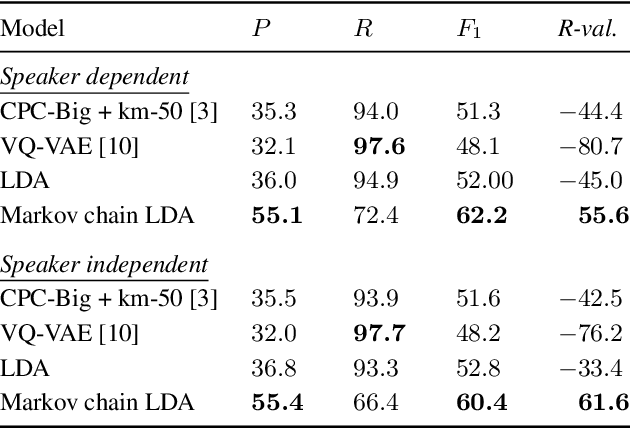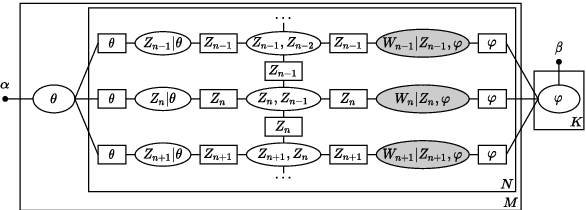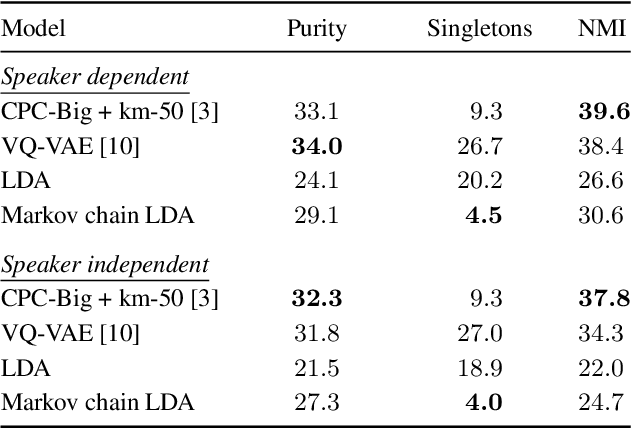A Temporal Extension of Latent Dirichlet Allocation for Unsupervised Acoustic Unit Discovery
Paper and Code
Jun 29, 2022



Latent Dirichlet allocation (LDA) is widely used for unsupervised topic modelling on sets of documents. No temporal information is used in the model. However, there is often a relationship between the corresponding topics of consecutive tokens. In this paper, we present an extension to LDA that uses a Markov chain to model temporal information. We use this new model for acoustic unit discovery from speech. As input tokens, the model takes a discretised encoding of speech from a vector quantised (VQ) neural network with 512 codes. The goal is then to map these 512 VQ codes to 50 phone-like units (topics) in order to more closely resemble true phones. In contrast to the base LDA, which only considers how VQ codes co-occur within utterances (documents), the Markov chain LDA additionally captures how consecutive codes follow one another. This extension leads to an increase in cluster quality and phone segmentation results compared to the base LDA. Compared to a recent vector quantised neural network approach that also learns 50 units, the extended LDA model performs better in phone segmentation but worse in mutual information.
 Add to Chrome
Add to Chrome Add to Firefox
Add to Firefox Add to Edge
Add to Edge